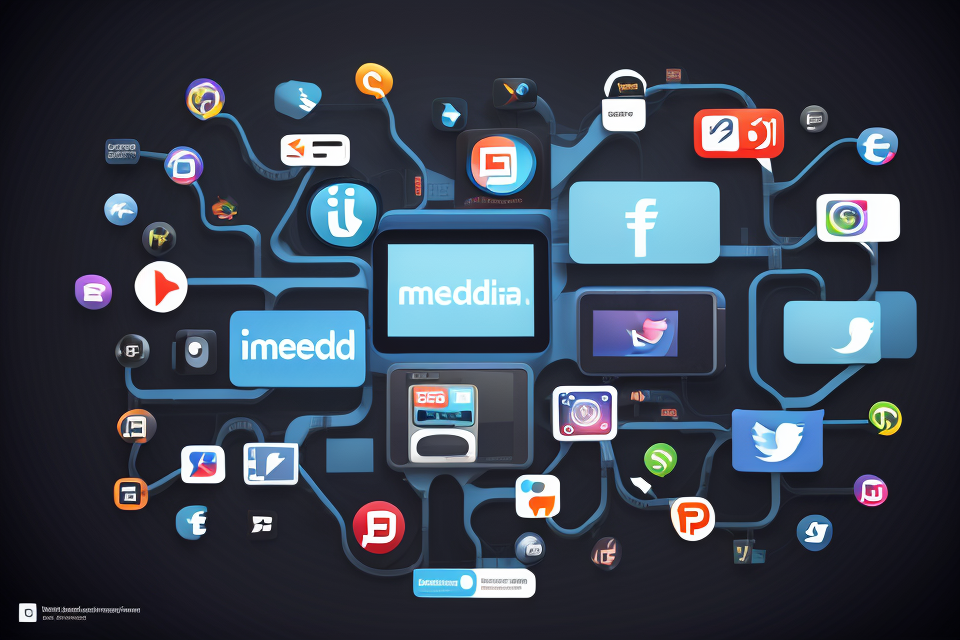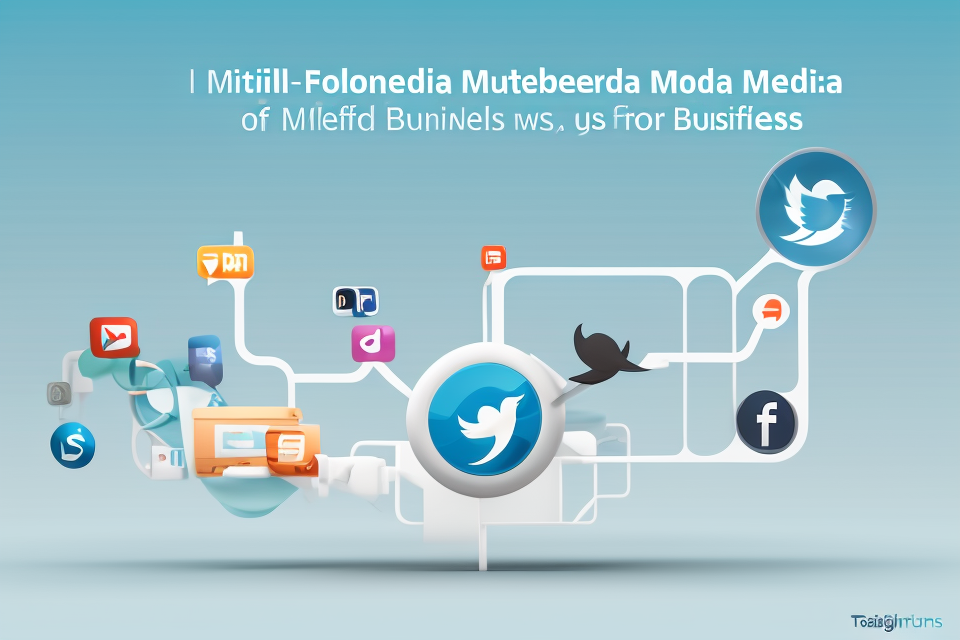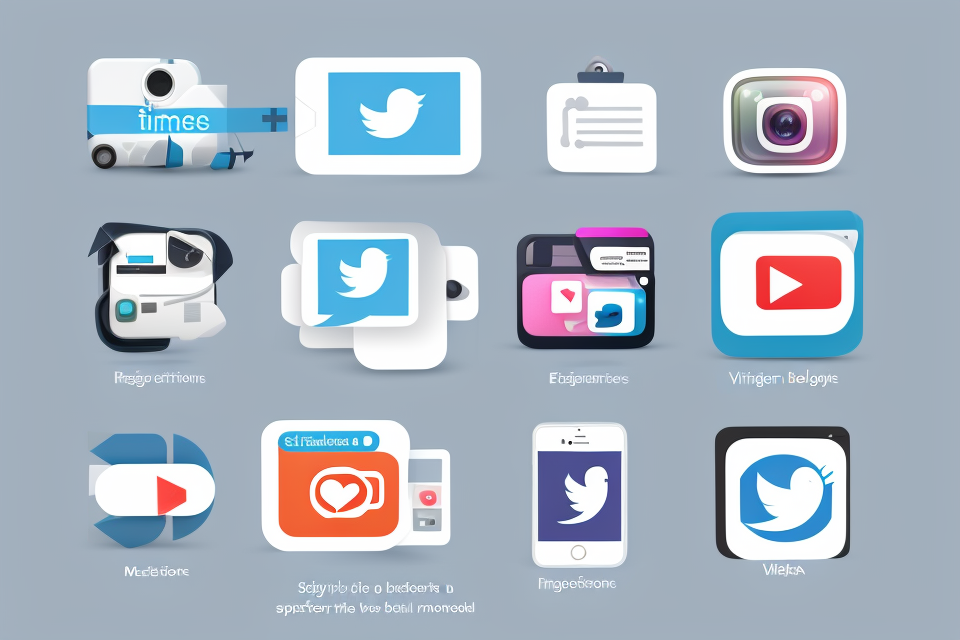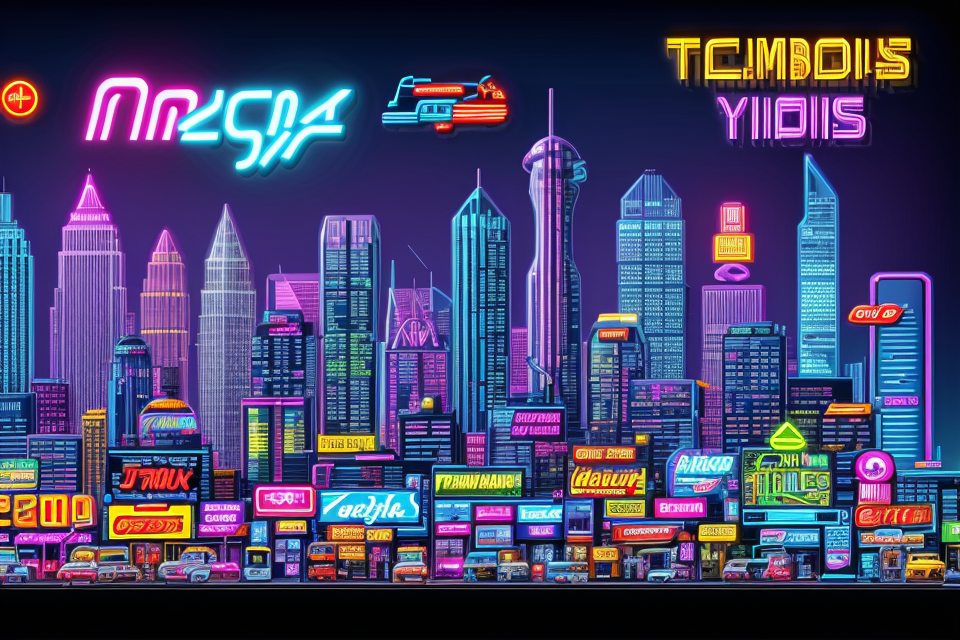Social media has become an integral part of our daily lives, connecting us with people from all around the world. But what exactly is social media? Simply put, social media is a platform that allows users to create, share, and interact with content, information, and other users. From Facebook to Twitter, Instagram to LinkedIn, there are numerous social media platforms available to users today.
Types of Social Media:
The types of social media can be broadly categorized into three main categories:
- Social Networking Sites – These are websites that allow users to connect with friends, family, and other people they know. Examples include Facebook, Twitter, and LinkedIn.
- Microblogging Sites – These are websites that allow users to share short messages or updates with their followers. Examples include Twitter and Tumblr.
- Media Sharing Sites – These are websites that allow users to share photos, videos, and other types of media with others. Examples include Instagram and YouTube.
In addition to these categories, there are also niche social media platforms that cater to specific interests or groups, such as Reddit for online communities and Pinterest for visual content.
Conclusion:
Social media has revolutionized the way we communicate and connect with others, providing us with a wealth of opportunities to express ourselves, share ideas, and build relationships. Whether you’re using social media for personal or professional purposes, understanding the different types of social media platforms can help you navigate the digital landscape and make the most of your online experience.
Social media refers to online platforms and tools that allow users to create, share, and interact with content, information, and other users. Some examples of social media include Facebook, Twitter, Instagram, LinkedIn, and YouTube. There are many different types of social media, including social networking sites, microblogging platforms, photo and video sharing sites, and forums. Social media has become an integral part of modern communication and is used by individuals, businesses, and organizations to connect with others, share information, and build communities.
What is Social Media?
History of Social Media
The history of social media can be traced back to the early days of the internet when online communities were formed to connect people with similar interests. One of the earliest social media platforms was Six Degrees, which was launched in 1997 and allowed users to create profiles, connect with others, and share content.
However, it was the launch of Friendster in 2002 that marked the beginning of the modern era of social media. Friendster was a social networking site that allowed users to create profiles, connect with friends, and share photos and messages. It quickly gained popularity and was soon followed by other social media platforms such as MySpace and LinkedIn.
In 2004, Mark Zuckerberg launched Facebook, which became one of the most popular social media platforms in the world. Facebook allowed users to connect with friends, share photos and videos, and join groups based on common interests. It also introduced features such as news feeds, status updates, and messaging, which became hallmarks of social media.
In the following years, social media continued to evolve and expand, with the launch of Twitter in 2006, Instagram in 2010, and TikTok in 2016. Each platform offered unique features and functionalities, but all shared the goal of connecting people and fostering online communities.
Today, social media has become an integral part of daily life for billions of people around the world, transforming the way we communicate, work, and interact with each other.
Types of Social Media
Static Social Media
Static social media refers to websites or platforms that primarily feature static content. The main focus of these platforms is on sharing information or data, which can include text, images, and videos. This type of social media is generally used for professional networking, such as LinkedIn, or for sharing personal information, such as personal blogs. Static social media sites do not require much interactivity and can be a great way to share information and connect with others.
Dynamic Social Media
Dynamic social media refers to websites or platforms that allow for more interaction and user-generated content. These platforms typically allow users to create and share content, such as photos, videos, and status updates. This type of social media is generally used for personal communication and entertainment, such as Facebook, Twitter, and Instagram. Dynamic social media sites require more engagement and interaction from users, and they offer a more dynamic and interactive experience.
Overall, the different types of social media provide a variety of options for users to connect, share, and engage with others. Whether it’s through static or dynamic platforms, social media offers a unique way to connect with others and share information and ideas.
Characteristics of Social Media
- Interactivity: Social media platforms allow users to interact with each other, create and share content, and engage in conversations.
- User-generated content: Social media is characterized by the ability of users to create and share their own content, such as text, images, videos, and audio.
- Real-time communication: Social media allows for real-time communication between users, making it easier for people to connect and share information.
- Viral content: Social media allows for the rapid sharing of information, which can lead to viral content that spreads quickly across multiple platforms.
- Accessibility: Social media is accessible from anywhere with an internet connection, making it easy for people to stay connected and share information.
- Personalization: Social media platforms allow users to personalize their profiles and engage with content that is relevant to their interests.
- Social discovery: Social media platforms enable users to discover new content and connect with others who share similar interests.
- Cross-platform functionality: Social media platforms are available on multiple devices, including computers, smartphones, and tablets, allowing users to access them from anywhere.
Types of Social Media
Static Social Media
Blogs
Blogs are a type of static social media that allows users to share their thoughts, opinions, and experiences through written content. They can be used to share personal stories, news, or information on a particular topic. Blogs can be hosted on various platforms, such as WordPress, Blogger, or Medium, and can be accessed by anyone with an internet connection.
Email Lists
Email lists are another form of static social media that allow users to communicate with each other through email. Email lists can be used for various purposes, such as sending newsletters, promoting products or services, or sharing information with a group of people. Email lists can be managed using various tools, such as Mailchimp or Constant Contact.
Discussion Forums
Discussion forums are a type of static social media that allow users to engage in discussions on various topics. They can be used to ask questions, share information, or simply engage in conversations with others. Discussion forums can be found on various platforms, such as Reddit or Quora, and can be accessed by anyone with an internet connection.
Fixed Photo and Video Sharing Websites
Fixed photo and video sharing websites are a type of static social media that allow users to share photos and videos with others. These websites typically require users to create an account and provide access to their photos and videos. Examples of fixed photo and video sharing websites include Flickr and Vimeo.
Dynamic Social Media
Dynamic social media refers to online platforms that allow users to interact with each other in real-time. These platforms enable users to share content, engage in conversations, and collaborate with others in real-time. Examples of dynamic social media platforms include social networking sites, microblogging platforms, video sharing platforms, and podcasts.
Social Networking Sites
Social networking sites are dynamic social media platforms that allow users to connect with friends, family, and other people with similar interests. These sites enable users to create profiles, share information, and communicate with others through messaging, chat, or video calls. Examples of social networking sites include Facebook, Twitter, LinkedIn, and Instagram.
Microblogging
Microblogging is a form of dynamic social media that allows users to share short messages, known as tweets, with their followers. These messages can include text, images, and links and can be shared on a variety of platforms, including Twitter and Tumblr. Microblogging is a popular way for people to share their thoughts, opinions, and news with others in real-time.
Video Sharing Platforms
Video sharing platforms are dynamic social media platforms that allow users to upload and share videos with others. These platforms enable users to interact with each other through comments, likes, and shares. Examples of video sharing platforms include YouTube, Vimeo, and Instagram.
Podcasts
Podcasts are a form of dynamic social media that allow users to share audio content with others. These podcasts can include interviews, discussions, and stories and can be shared on a variety of platforms, including Apple Podcasts, Spotify, and Google Podcasts. Podcasts are a popular way for people to stay informed and entertained on-the-go.
FAQs
1. What is social media?
Social media refers to online platforms and tools that allow users to create, share, and interact with content, information, and other users. Social media can include various types of content, such as text, images, videos, and audio, and can be accessed through websites or mobile apps.
2. What are the types of social media?
There are several types of social media, including:
- Social networking sites: These platforms allow users to connect with friends, family, and other people they know. Examples include Facebook, Twitter, and LinkedIn.
- Microblogging sites: These platforms allow users to share short messages or “tweets” with their followers. Examples include Twitter and Tumblr.
- Video sharing sites: These platforms allow users to upload and share videos. Examples include YouTube and Vimeo.
- Photo sharing sites: These platforms allow users to upload and share photos. Examples include Instagram and Flickr.
- Blogging sites: These platforms allow users to create and share their own blogs or web pages. Examples include WordPress and Blogger.
3. What are some other examples of social media?
Other examples of social media include:
- Forums: These are online discussion boards where users can share ideas and information on a particular topic.
- Podcasts: These are audio or video programs that can be downloaded or streamed online.
- Social news sites: These platforms allow users to submit and vote on articles and other content. Examples include Reddit and Digg.
- Wikis: These are websites that allow users to collaboratively create and edit content. Examples include Wikipedia and Wikia.
4. How do I choose the right social media platform for my needs?
Choosing the right social media platform depends on your goals and the audience you want to reach. Consider the features and capabilities of each platform, as well as the demographics of its users. It may also be helpful to consider the type of content you want to share and the format that is best suited for it.



